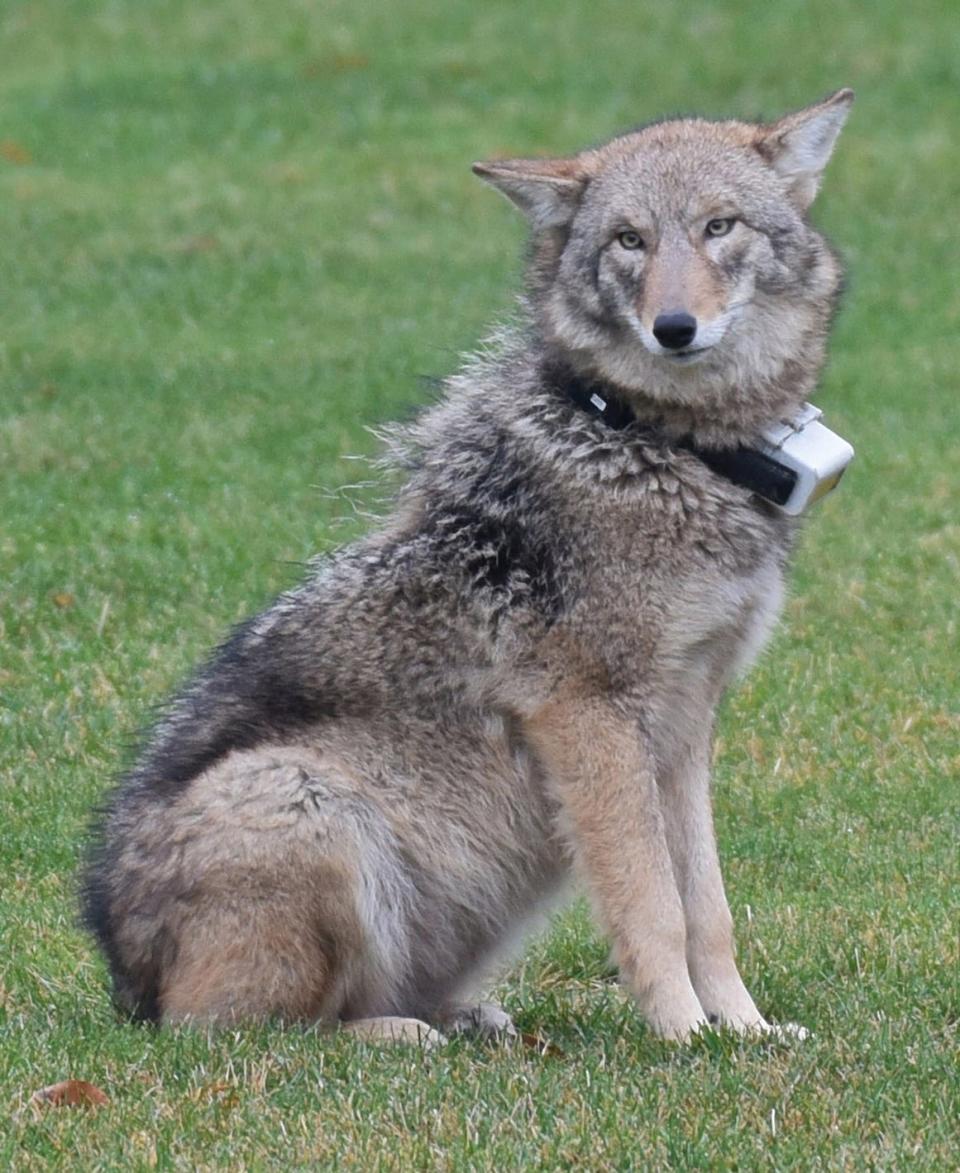Opinion/Guest View: Becoming 'coyote smart' on Aquidneck Island – are we there yet?
Coyotes arrived on Aquidneck Island in the mid-1990s. In 2005, the Narraganset Bay Coyote Study (NBCS) was established to conduct research on them under the direction of wildlife biologist Dr. Numi Mitchell. In 2013, a group of organizations came together to launch a public information initiative called CoyoteSmarts. Its mission was three-fold: to increase public awareness of coyotes, promote public and pet safety, and encourage best coyote engagement practices.
To accomplish these objectives, a variety of online resources were created, including a website, Facebook page, public safety brochure, and videos. Community outreach was also initiated through school programs offered by the Potter League and public presentations by NBCS. Most recently, a “Coyote Corner” was set up by the Norman Bird Sanctuary in its Curiosity Lab to further our educational efforts, and a small exhibit is in the works at the Roger Williams Park Zoo.
With steadfast support from the Prince Charitable Trusts and the Rhode Island Foundation, we have expanded our offerings and our audience over the years and have even achieved a national reach.

As we conclude our 10th and final year, the time has come to assess the results. Early successes included the adoption, by all three Aquidneck Island communities and Jamestown, of the “Coyote Best Management Practices” recommended by NBCS, along with “no-feeding” ordinances that make it a violation to provide food attractants, intentionally or unintentionally, to coyotes and other wildlife.
While these ordinances can be an important management tool, they can also be difficult to enforce. To our knowledge, only two communities – Portsmouth and Jamestown – have brought charges against anyone for unlawful feeding. The Portsmouth case actually went to court and the town prevailed.
At the local level, we also collaborated with NBCS on a “forensic tracking” program to identify coyote food resources on the island through the use of GPS tracking data obtained from collared coyotes. Our findings and recommendations were presented in a report that was shared with local officials. We also conducted community presentations and co-sponsored a “Coyote Smart Island” forum with the Aquidneck Island Planning Commission. For their part, the towns have posted links to our website, and Newport even went so far as to launch a “Be Coyote Smart” campaign that ran briefly on Nextdoor.
At the state level, we collaborated with RIDEM on the creation of coyote “no-feeding” signage for state park picnic areas and boat ramps on Aquidneck Island and in Jamestown. The signs were placed at locations that NBCS tracking had identified as coyote “hotspots.” In addition, RIDEM has added more coyote content to its education and outreach programs. It also issued a major revision of its coyote management and response guide that includes references to our website and videos. Coming soon is an official management plan being developed for RIDEM by NBCS.
As for measurable results, we have some encouraging data from the Potter League’s school programs on coyotes. When third graders were presented with the statement “We are helping coyotes when we leave food out for them,” only 32% disagreed (the desired response) at the start of the program. After six weekly lessons, that number rose to 63%.
We would like to think that our efforts have also contributed to the overall decline in coyote complaints to local officials, although it could simply be that social media has become the venue of choice for complaining. We have been following the conversations on Nextdoor for quite some time and coyotes continue to be a topic of considerable interest. While there are those who still think that the only good coyote is a dead coyote, the discussions by and large have become more civil and better informed. We are especially pleased to see that our “no-feeding” message seems to have taken hold.
As the research continues to tell us, food resources provided by humans can lead to increased coyote traffic in residential areas and more frequent contact with people and pets. When these food resources are removed, as NBCS findings have shown to date, coyotes are forced to expand their territories and their population density drops. If forced to rely on their natural diet, their numbers will drop as well, and their presence in yards and neighborhoods will once again be a rare event.
But can that happen on a large enough scale to really make a difference? The answer is up to us and I hope it’s a resounding “Yes!”
Jo Yellis is the project coordinator for CoyoteSmarts. For more info: www.coyotesmarts.org.
This article originally appeared on Newport Daily News: Coyote awareness on Aquidneck Island has changed in 10 years: Guest View

